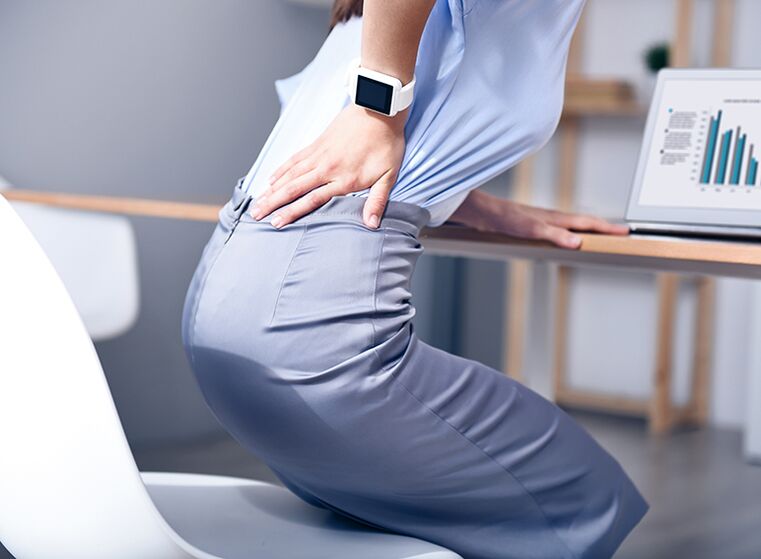First of all, the doctor notes that there should be no back pain in the norm:

If pain syndrome rarely occurs - for example, after lifting weights, exercising, or after an anxious situation - this is a variant of the norm. But if the pain occurs regularly - every time you sit in an uncomfortable chair - this is a reason to be careful and look for the cause.
Once in six months or once a year, do not rush to the doctor with pain that occurs only after traumatic factors. However, if the pain syndrome becomes chronic or progresses to a more severe stage and then returns to the lungs, this is already a reason to contact a specialist. The neurologist completes the following:
In addition, there may be a single but acute pain and a sharp increase in pain syndrome that occurs without a reason to see a specialist. Especially if the pain spreads to the leg or other parts of the body. This can be accompanied by other unpleasant sensations: loss of sensitivity, "gas bubbles" on the skin, a burning sensation. In such cases, you must consult a doctor.
Why can there be back pain?
According to the doctor, a common cause is myofascial pain syndrome, ie pain associated with abnormal muscle tension in the lower back.
"Pathological muscle syndrome occurs precisely because we sit restlessly, physically load ourselves and lift weights, " says the doctor. The result is muscle spasm. But more often there is a root compression in the spine - this is a different, neuronal, nature of the pain.
The neurologist explains that the roots leave the spinal cord and extend to various parts of the body, including the spine. And when there is pressure on these nerves, pain can begin to be felt in various parts of the body: in the thighs, coccyx, sacrum, and even in the abdomen.
The third option is the pathology of the internal organs. These can be problems with the kidneys, intestines, and urological or gynecological parts. In this case, back pain acts as a signal of the presence of other diseases.
There are two types of pain: nociceptive (ie inflammatory) and neuropathic.
The first is associated with inflammation of the muscle fibers - manifests itself in myofascial pain syndrome and is associated with a traumatic factor. This pain is generally dull, and is attracted by an increase in local temperature when it is hot to the touch of the waist.
Neuropathic pain manifests itself in different ways: a burning sensation, gas bumps, numbness, chills, decreased sensitivity. Even a small injection in the lower back can make the pain worse. If you experience such symptoms, consult a neurologist immediately. And in general, the answer to the question of which doctor to go to for back pain is unequivocal: a neurologist.
Can pain be managed at home?
Some people think that the problem of back pain can be solved by changing the seat. The neurologist is convinced: it is always easy to see a doctor.
Of course, you can change your chairs one by one for more comfortable seats. But it may not be here. In any case, even if you have a comfortable office chair for work, it would be good to get up every two hours and do some physical activity: bend, bend, change the position of the waist.
A pillow or roll placed under the back works on a similar principle:
We sat as usual, then put a pillow. We stayed in this position for a while - they raised it again, - advises the neurologist. - Such back support is also useful. You can change the angle of inclination of the monitor, including moving it a little to the right, a little to the left. Thus, the load varies - both in the lower back and in the thoracic region and neck.
If the condition needs to be alleviated immediately, the doctor points out that only dry heat should be used to treat back pain:
In this case, you should never go to a hot bath. But electric and salt heating bags (in the form of bags made by grandmothers) help a lot. Various applicators will also work. These are needle rugs: if you lie on them, muscle tone will disappear.
To do this, the doctor recommends a short non-steroidal anti-inflammatory drug and the use of a local anti-inflammatory ointment:
If you have done all this and the pain has passed in 3-4 days, he can say that there is no problem. If the pain does not subside, there is no more choice: you must go to the doctor.























